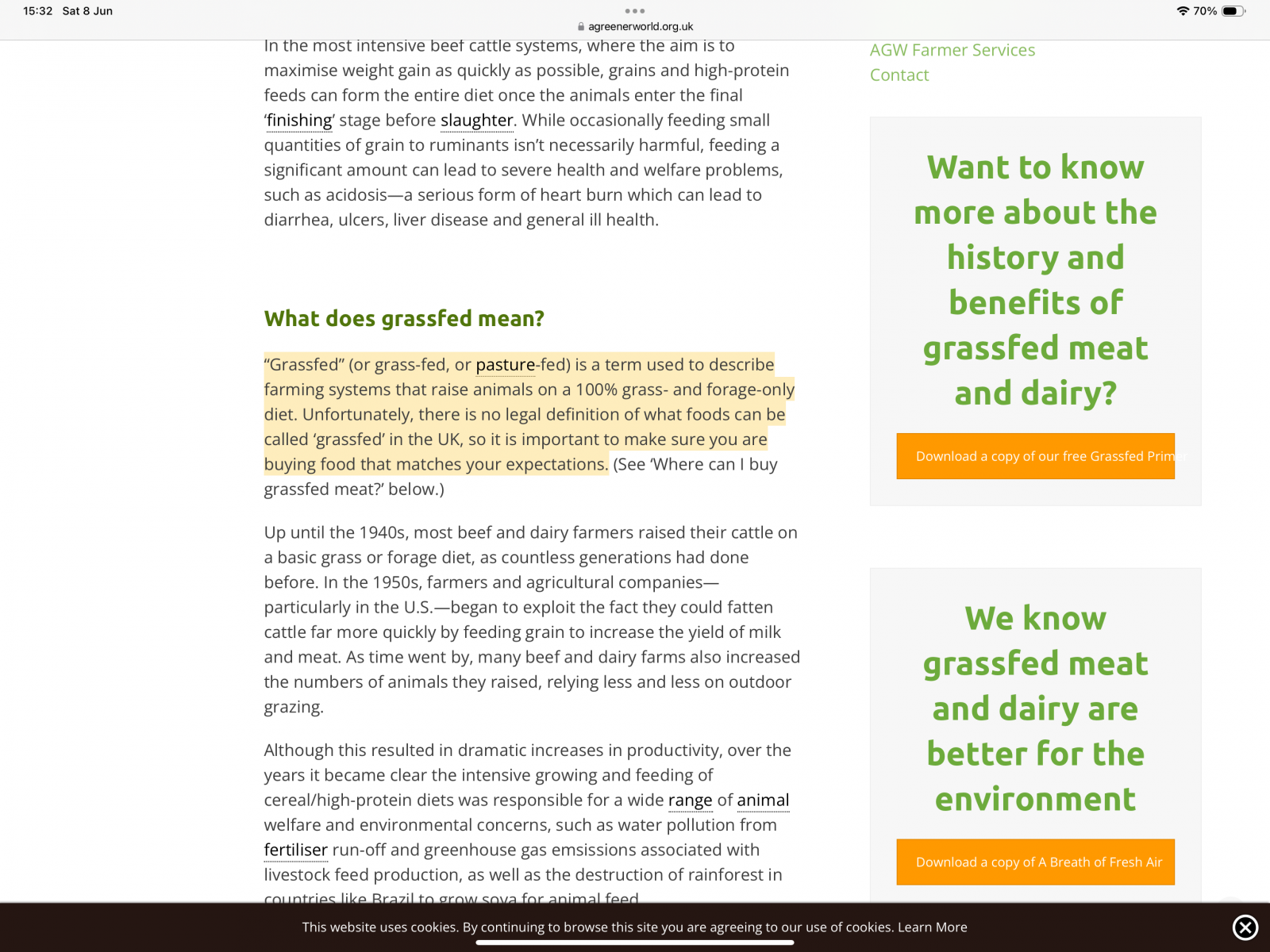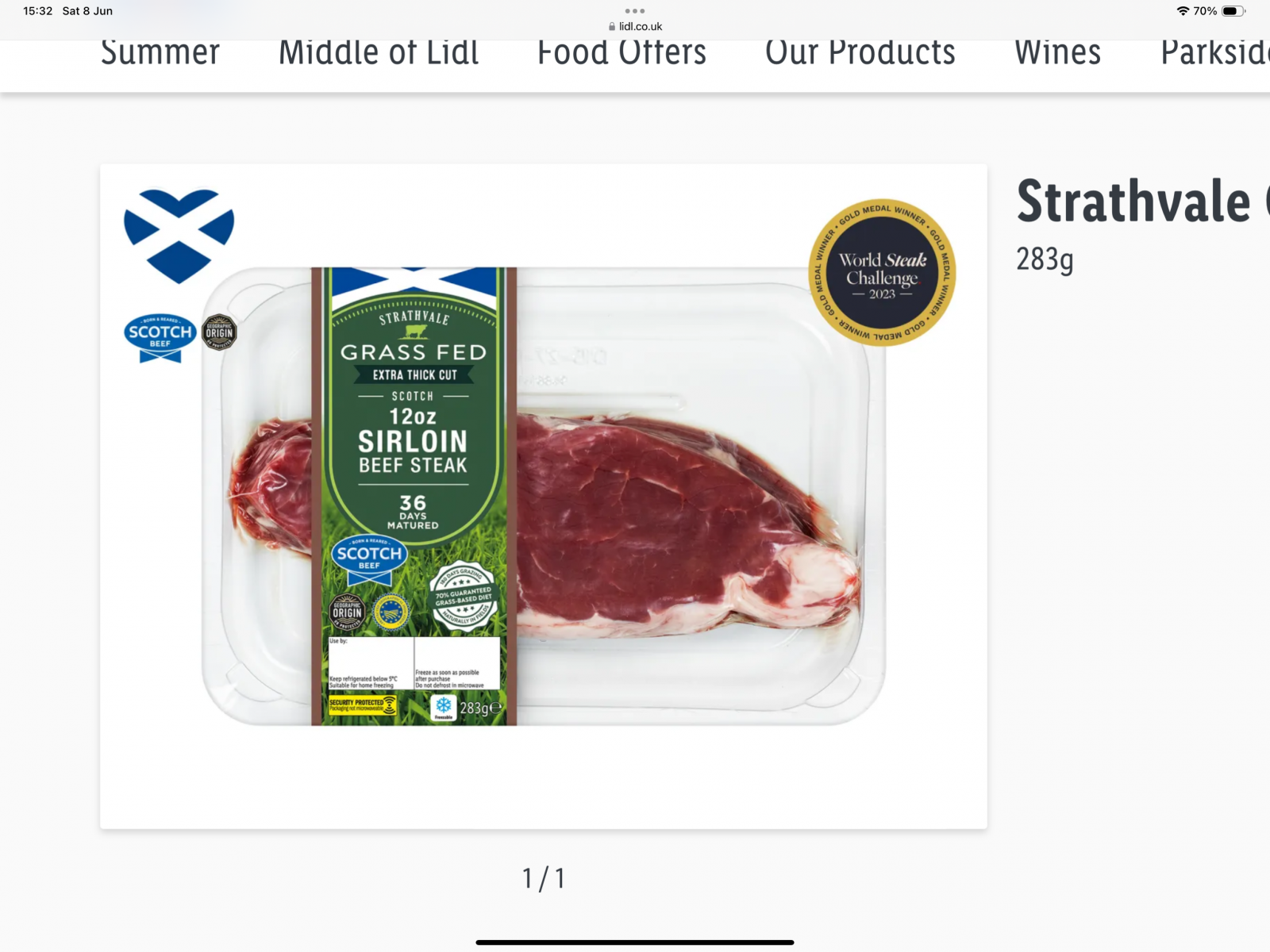We’d like to remind Forumites to please avoid political debate on the Forum.
This is to keep it a safe and useful space for MoneySaving discussions. Threads that are – or become – political in nature may be removed in line with the Forum’s rules. Thank you for your understanding.
📨 Have you signed up to the Forum's new Email Digest yet? Get a selection of trending threads sent straight to your inbox daily, weekly or monthly!
How much added water is allowed in a chicken without it being declared on the label?
Comments
-
It's the opposite, freezer burn on unsealed products like meat is caused by dehydration.benawhile said:I wonder if meat in a freezer can absorb more water if not sealed.
Let's Be Careful Out There0 -
Given we are talking about fresh meat, I would be surprised if anyone thought there is only a single way to cook a chicken breast or a packet of minced beefGeneral_Grant said:
Labels I recall reading have generally specified a cooking method - either in the nutritional information box or the "how to cook" section with only one method.DullGreyGuy said:
In a freezer all water should be a solid and therefore cannot be absorbed.benawhile said:I wonder if meat in a freezer can absorb more water if not sealed.
We tend to buy fresh rather than frozen meats (and self freeze if needed) where the labelling rules seem to be a bit less rigorous. There is a vast difference between the size of a 200g chicken breast after cooking if bought from Tesco or our local butcher. Haven't ever gone as far as weighing both post cooking to see if the visual size is reflected in weight too.
Most ratios are going to be on raw weight as they cannot control how you cook it and some could sous vide with minimal liquid loss and others could forget its in the oven and dry it out totallybenawhile said:The main problem with this for me is that I may be making a 100% error calculating the protein content of what I am eating. The pack label says 25mg/100mg but is that based on the weight before or after cooking?0 -
For an interest in monitoring your protein intake, you may find an app I use helpful.benawhile said:I bought them fresh, then froze them at home. Mnoee thank you, I didn't know 25% was lost.I wonder if meat in a freezer can absorb more water if not sealed.The main problem with this for me is that I may be making a 100% error calculating the protein content of what I am eating. The pack label says 25mg/100mg but is that based on the weight before or after cooking?
My Fitness Pal.
There is a free version that should be perfectly adequate.1 -
Grumpy_chap funny you should say that, I have a tab open at their home page for the last few weeks, now I shall have to actually read it!
0 -
What I find is that a lot of products have a E on the labelling meaning that the product can weigh less than what is quoted on the label. Frozen meat can have a lot of water added that isn't mentioned on the label, especially bacon that says it's 200g but if you take the contents out of the packaging and weigh them it will say 150g. The letter E is used so that manufacturers can put less contents in the packet and still be within the law.
I buy a 900g block of cheese from Lidl every few weeks and it's normally over 900g but only by 4 or 5g. Fish is another thing I buy and it says 500g on the box but the last box I bought the four fillets weighed 440g, 60g less than the weight stated on the box.Someone please tell me what money is0 -
Packaging is allowed to have one of two methods...wild666 said:What I find is that a lot of products have a E on the labelling meaning that the product can weigh less than what is quoted on the label. Frozen meat can have a lot of water added that isn't mentioned on the label, especially bacon that says it's 200g but if you take the contents out of the packaging and weigh them it will say 150g. The letter E is used so that manufacturers can put less contents in the packet and still be within the law.
I buy a 900g block of cheese from Lidl every few weeks and it's normally over 900g but only by 4 or 5g. Fish is another thing I buy and it says 500g on the box but the last box I bought the four fillets weighed 440g, 60g less than the weight stated on the box.
1) Guaranteed minimum weight
2) Average weight
An E on the package means they've gone for option 2. With this option there is an allowable deviation both in frequency and weight/volume based on the declared average weight along with a minimum sampling set of rules. One of the additional rules is that no package can be double the tolerable negative error even if the average of the sample would otherwise have still been ok. Your block of cheese certainly would have failed the batch had it been sampled for testing.2 -
Why would the cheese fail?DullGreyGuy said:
Packaging is allowed to have one of two methods...wild666 said:What I find is that a lot of products have a E on the labelling meaning that the product can weigh less than what is quoted on the label. Frozen meat can have a lot of water added that isn't mentioned on the label, especially bacon that says it's 200g but if you take the contents out of the packaging and weigh them it will say 150g. The letter E is used so that manufacturers can put less contents in the packet and still be within the law.
I buy a 900g block of cheese from Lidl every few weeks and it's normally over 900g but only by 4 or 5g. Fish is another thing I buy and it says 500g on the box but the last box I bought the four fillets weighed 440g, 60g less than the weight stated on the box.
1) Guaranteed minimum weight
2) Average weight
An E on the package means they've gone for option 2. With this option there is an allowable deviation both in frequency and weight/volume based on the declared average weight along with a minimum sampling set of rules. One of the additional rules is that no package can be double the tolerable negative error even if the average of the sample would otherwise have still been ok. Your block of cheese certainly would have failed the batch had it been sampled for testing.
OP says 900g block (sold weight) was 904g or 905g actual weight. Seems good to me.0 -
AFAIK, organic food isn't allowed to have added water. We buy grass fed grass finished or grass-pastured or organic. Not much from supermarkets, generally only organic chicken thighs from Sainsbury's or grass fed beef when on offer at Lidl. Pasture for Life certified has strict rules, it's not that different from organic.
We buy fish from fishing boats now. Cheaper than Waitrose, fresh caught not farmed.
We try to eat the fresh stuff rather than feeding the freezer. Am trying to empty it of frozen fish and steaks.
IMO the cheaper the food, the more the manufacturer will try to make a quick buck e.g. underweight, added water etc.0 -
I think something fishy went on.Grumpy_chap said:
Why would the cheese fail?DullGreyGuy said:
Packaging is allowed to have one of two methods...wild666 said:What I find is that a lot of products have a E on the labelling meaning that the product can weigh less than what is quoted on the label. Frozen meat can have a lot of water added that isn't mentioned on the label, especially bacon that says it's 200g but if you take the contents out of the packaging and weigh them it will say 150g. The letter E is used so that manufacturers can put less contents in the packet and still be within the law.
I buy a 900g block of cheese from Lidl every few weeks and it's normally over 900g but only by 4 or 5g. Fish is another thing I buy and it says 500g on the box but the last box I bought the four fillets weighed 440g, 60g less than the weight stated on the box.
1) Guaranteed minimum weight
2) Average weight
An E on the package means they've gone for option 2. With this option there is an allowable deviation both in frequency and weight/volume based on the declared average weight along with a minimum sampling set of rules. One of the additional rules is that no package can be double the tolerable negative error even if the average of the sample would otherwise have still been ok. Your block of cheese certainly would have failed the batch had it been sampled for testing.
OP says 900g block (sold weight) was 904g or 905g actual weight. Seems good to me.
Let's Be Careful Out There0 -
Grass fed at Lidl only guarantees it’s 70% grass fed though.MrsStepford said:AFAIK, organic food isn't allowed to have added water. We buy grass fed grass finished or grass-pastured or organic. Not much from supermarkets, generally only organic chicken thighs from Sainsbury's or grass fed beef when on offer at Lidl. Pasture for Life certified has strict rules, it's not that different from organic.
We buy fish from fishing boats now. Cheaper than Waitrose, fresh caught not farmed.
We try to eat the fresh stuff rather than feeding the freezer. Am trying to empty it of frozen fish and steaks.
IMO the cheaper the food, the more the manufacturer will try to make a quick buck e.g. underweight, added water etc.
 I’m a Senior Forum Ambassador and I support the Forum Team on Competitions Time, Shopping & Freebies boards, Employment, Jobseeking & Training boards If you need any help on these boards, do let me know. Please note that Ambassadors are not moderators. Any posts you spot in breach of the Forum Rules should be reported via the report button, or by emailing forumteam@moneysavingexpert.com. All views are my own and not the official line of MoneySavingExpert.0
I’m a Senior Forum Ambassador and I support the Forum Team on Competitions Time, Shopping & Freebies boards, Employment, Jobseeking & Training boards If you need any help on these boards, do let me know. Please note that Ambassadors are not moderators. Any posts you spot in breach of the Forum Rules should be reported via the report button, or by emailing forumteam@moneysavingexpert.com. All views are my own and not the official line of MoneySavingExpert.0
Confirm your email address to Create Threads and Reply

Categories
- All Categories
- 352.7K Banking & Borrowing
- 253.8K Reduce Debt & Boost Income
- 454.6K Spending & Discounts
- 245.8K Work, Benefits & Business
- 601.8K Mortgages, Homes & Bills
- 177.7K Life & Family
- 259.7K Travel & Transport
- 1.5M Hobbies & Leisure
- 15.9K Discuss & Feedback
- 37.7K Read-Only Boards






